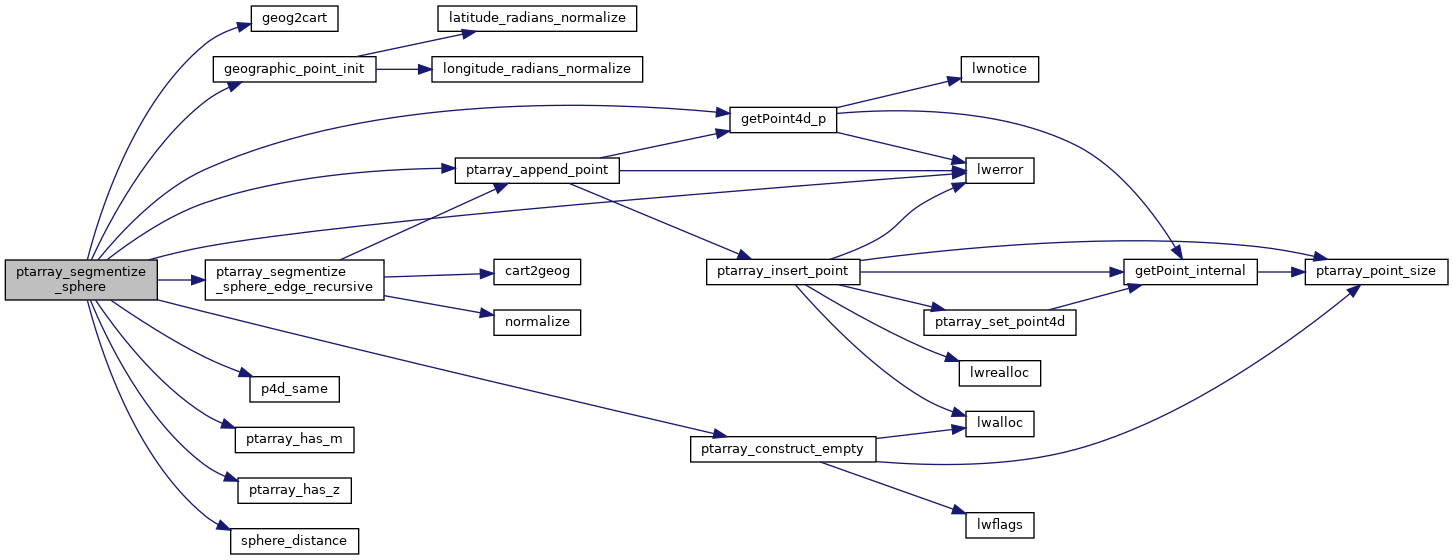◆ ptarray_segmentize_sphere()
|
static |
Create a new point array with no segment longer than the input segment length (expressed in radians!)
- Parameters
-
pa_in - input point array pointer max_seg_length - maximum output segment length in radians
Definition at line 1684 of file lwgeodetic.c.
POINTARRAY * ptarray_construct_empty(char hasz, char hasm, uint32_t maxpoints)
Create a new POINTARRAY with no points.
Definition: ptarray.c:59
int getPoint4d_p(const POINTARRAY *pa, uint32_t n, POINT4D *point)
Definition: lwgeom_api.c:125
int ptarray_append_point(POINTARRAY *pa, const POINT4D *pt, int allow_duplicates)
Append a point to the end of an existing POINTARRAY If allow_duplicate is LW_FALSE,...
Definition: ptarray.c:147
void geographic_point_init(double lon, double lat, GEOGRAPHIC_POINT *g)
Initialize a geographic point.
Definition: lwgeodetic.c:180
static int ptarray_segmentize_sphere_edge_recursive(const POINT3D *p1, const POINT3D *p2, const POINT4D *v1, const POINT4D *v2, double d, double max_seg_length, POINTARRAY *pa)
Definition: lwgeodetic.c:1633
double sphere_distance(const GEOGRAPHIC_POINT *s, const GEOGRAPHIC_POINT *e)
Given two points on a unit sphere, calculate their distance apart in radians.
Definition: lwgeodetic.c:948
void geog2cart(const GEOGRAPHIC_POINT *g, POINT3D *p)
Convert spherical coordinates to cartesian coordinates on unit sphere.
Definition: lwgeodetic.c:404
Definition: liblwgeom.h:387
Definition: liblwgeom.h:399
Definition: liblwgeom.h:412
References geog2cart(), geographic_point_init(), getPoint4d_p(), LW_TRUE, lwerror(), POINTARRAY::npoints, p4d_same(), ptarray_append_point(), ptarray_construct_empty(), ptarray_has_m(), ptarray_has_z(), ptarray_segmentize_sphere_edge_recursive(), sphere_distance(), POINT4D::x, and POINT4D::y.
Referenced by lwgeom_segmentize_sphere().
Here is the call graph for this function:

Here is the caller graph for this function:
